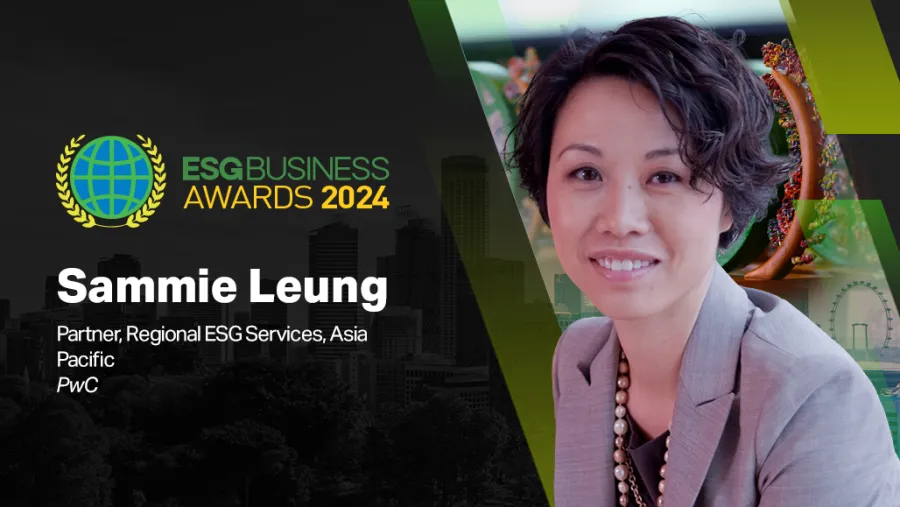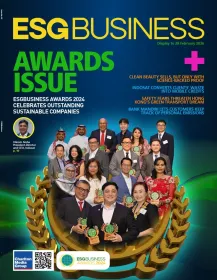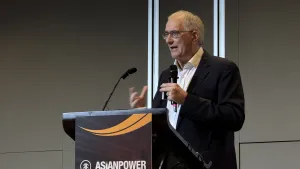
Sammie Leung of PwC advocates companies focus on specialised ESG strategy
She emphasises integrating ESG strategies effectively requires a comprehensive approach to ensure long-term sustainability and compliance.
As businesses increasingly commit to sustainable practices, companies must navigate the complexities of integrating ESG into their operations and stay informed about evolving practices and technologies to achieve effective ESG outcomes and maintain a competitive advantage.
Sammie Leung, Partner, Regional ESG Service Asia Pacific at PwC, is a founding member of PwC’s Hong Kong and Mainland China ESG team with over 600 professionals and has a regional role in covering markets such as Singapore, Hong Kong, and Greater China. Her expertise spans four primary areas: ESG strategy and transformation, climate risk and resilience, decarbonisation, and disclosures.
Leung guides clients on setting science-based targets, developing decarbonisation strategies, and adopting the TCFD framework. She provided ESG advisory to over 100 companies across diverse sectors, possessing a deep understanding of integrating ESG and climate-related factors into financial services risk assessments and investment processes. She is also a partner in charge of developing PwC’s ESG Reporting Tool and Climate-related Risks Assessment Tool, contributing to broader ESG knowledge through active community involvement.
As a judge at the ESGBusiness Awards 2024, Leung emphasises the need for strategic foresight, technological adaptation, and a comprehensive understanding of ESG strategies to ensure long-term resilience.
PwC offers key services in ESG strategy and transformation, climate risk and resilience, decarbonisation, and disclosures. Which of these areas do you see as the most critical for companies to focus on today, and why?
Strategy, climate risks and resilience, decarbonisation and disclosures are interrelated issues. At PwC, we are keen to help clients have an overall understanding of the ESG and climate matter at hand, what the stakeholder expectations are, and most importantly, what the business relevance to their companies. Logically, a company will need to have a tailored ESG strategy to define and align their ambition and how they interpret the ESG and climate issues, which formulate key metrics, targets, and risk appetite, before you go about risk management and disclosures. It is true that in Asia, many companies started their ESG journey with disclosures, thanks to the big push from stock exchanges to serve the disclosure needs of the investor community.
Most companies will agree that compliance is extremely important – and when you look at the disclosure requirements, it asks you to disclose your efforts in climate risk management and the resilience plan, amongst other content. I’ll also mention that decarbonisation will help lower your climate risks, particularly transition risks, and be more resilient. It's hard to pick one because I’ve seen companies go bankrupt due to climate risks so it’s a matter of survival and there are companies losing business opportunities due to a lack of disclosures of climate risk and decarbonisation strategy.
What are some common pitfalls companies encounter when setting targets for decarbonisation, and how can they avoid these mistakes?
Some companies sign up for decarbonisation targets without doing proper feasibility studies or having a sound understanding of the methodologies, underlying requirements, resources, and impact on business.
Whilst setting targets isn’t a “regulated” exercise, companies will want the target set to be perceived as credible. There are international leading methodologies, such as the guidance set out under SBTi (science-based target initiatives), that guide practitioners in target setting, and there are industry-focussed guidance materials for sectors such as, e.g., building, power, apparel and footwear. It is important for companies to understand the expectations set out by the methodologies and the potential commitments they are undertaking before they publicly announce their decarbonisation targets.
With your in-depth understanding of how the financial services sector integrates ESG and climate-related factors into risk assessment and investment processes, what trends are you observing in this sector?
With the push from asset owners and regulators (such as MAS, SFC and HKMA), asset managers and banks have been factors in climate risks in their risk analysis processes. In terms of trends, both Hong Kong and Singapore are making progress in the taxonomy to provide additional clarity on how practitioners define green and what sustainable activities should look like. The development of transition financing will be highly relevant for the financial services sector in the Asia Pacific region and the market expects additional guidance to be soon published by the MAS. Generally, finance practitioners are more familiar with climate risk becoming an integral part of their day-to-day activities and are increasingly cautious about greenwashing risks. The sector will also soon be preparing for its financed emission disclosures, followed by ISSB-aligned disclosures that will be widely adopted across this region.
What role do you see digital innovation playing in the future of ESG strategy and reporting?
It plays an important role. Companies should not plan to handle their ESG disclosures manually. It’s an exciting time to see how emerging tech can help the ESG agenda, and I’ve come across start-ups using AI to automate a lot of the tedious processes in data collection or analytics as well as reporting processes.
Looking ahead, what do you see as the biggest challenges and opportunities for companies in the Asia Pacific region in terms of ESG and sustainability?
This region will have an instrumental role in the global sustainability agenda. Not only does the region itself have very rich biodiversity and is a very effective green bank, but this region is very innovative and also is a supply chain for other parts of the world. Opportunities are tremendous; whether it is about new innovative green solutions, how to upscale carbon markets to combat deforestation, and tackling the complexity of natural capital – this region has a key role to play.
We have gaps in knowledge and talent and both the public and private sectors are working hard to bridge such gaps. New rules such as EUCBAM that require exporters to do embodied carbon when exporting goods into the EU will surely be challenging.
As a judge for the ESGBusiness Awards 2024, what criteria will you be focussing on when evaluating companies for these awards?
Companies that will cover key elements such as governance, strategy, climate risks, decarbonisation and transparency.















